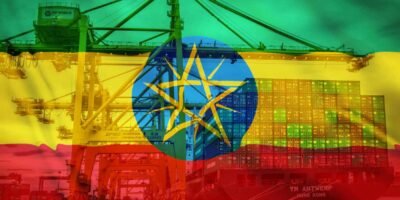Ever wonder why do countries change their names? You’re not alone.Choosing a country’s name is no small decision. In the last century, several nations decided to rebrand themselves with a new moniker. Maybe the old name reminded them of a colonial past they wanted to forget. Perhaps they wanted a name that better reflected their cultural heritage. Sometimes, like in the case of Macedonia, the name change was forced by its neighbor Greece. Whatever the reason, a nation’s name is a symbolic representation of how it sees itself on the global stage.
Myanmar: From Burma to Myanmar

For nearly a century, the Southeast Asian country you know as Myanmar went by a different name: Burma. In 1989, the ruling military junta changed the name to Myanmar, claiming it was more inclusive of the country’s ethnic minorities.
Many opposed the change, saying it was done without public consent. To this day, some governments and media outlets still use Burma, while others have adopted Myanmar. As a visitor, it’s best to respect the local preference and say Myanmar.

Whether you call it Myanmar or Burma, this enigmatic nation remains an exciting frontier for culturally-curious travelers. With political changes afoot and tourist numbers rising, now is the time to visit – before the rest of the world catches on.
Czech Republic: From Czechoslovakia to the Czech Republic to Czechia

The nation once known as Czechoslovakia decided to rebrand itself in the early 1990s following the Velvet Revolution and the end of communist control. On January 1, 1993, the country officially split into two independent nations: the Czech Republic and Slovakia.
The Czech Republic chose to shorten its name to ‘Czechia’ in 2016 to make it easier to use in everyday speech and to align with rules established by the United Nations. The new name is meant to be a casual, colloquial version of the official name, ‘the Czech Republic Czechia had been used informally for decades prior and the name change just made it formally official.

Some Czechs still prefer using ‘the Czech Republic’ for formal or official purposes. But ‘Czechia’ is gaining more widespread acceptance and recognition internationally. While some Czech citizens were hesitant about the name change, proponents argued that it honors the country’s heritage and distinct Slavic identity. The name ‘Czechia’ dates back to the early 19th century and was used during periods of the Czech National Revival.
The rebranding to Czechia, reflects the country’s complex history in gaining independence and establishing its own democratic nation. The name changes signify turning away from its communist past and embracing a new, independent identity on the global stage.
North Macedonia: From Macedonia to North Macedonia

In 2019, the Republic of Macedonia officially changed its name to the Republic of North Macedonia. The small Balkan country had gone by the name Macedonia since 1991 when it became independent from Yugoslavia. However, its southern neighbor Greece opposed the name, claiming it implied territorial ambitions on the Greek province of Macedonia.
After decades of dispute, the countries finally reached a compromise with the Prespa Agreement in 2018. Under the deal, the Republic of Macedonia agreed to change its name to the Republic of North Macedonia in exchange for Greece dropping its objections to the country joining international organizations like NATO and the European Union.

The name change was not without controversy in either country. For most Macedonians, it was an insult which stood against the basic principle of self-determination. However, it allowed North Macedonia to join NATO in 2020. The country is still seeking EU membership although it was promissed by the Western powers in exchange for the signing of the Prespa agreement.
Read this article to find out why Macedonians hate the new name!
Eswatini: From Swaziland to Eswatini

In 2018, the African nation of Swaziland officially changed its name to Eswatini. King Mswati III announced the change to mark the 50th anniversary of Swaziland’s independence from British rule. The new name, Eswatini, means “land of the Swazis” in the Swazi language.
The king felt the name Swaziland did not adequately reflect the nation’s culture and history. Swaziland was a name given by European colonists, whereas Eswatini has been used for centuries by the Swazi people. The king hoped the name change would help strengthen the national identity and bring more cultural awareness to the country.

Eswatini is a small, landlocked country located in southern Africa, surrounded entirely by South Africa and Mozambique. Despite its small size, Eswatini is home to a rich culture, stunning natural scenery, and abundant wildlife. The name change to Eswatini was an important move to honor the nation’s history and cultural heritage.
Iran: From Persia to Iran

In 1935, Reza Shah Pahlavi issued a decree changing the name of Persia to Iran. The motivation behind this move was to signal the country’s Aryan heritage and distance itself from the Greek-derived name Persia.
Iran, meaning “Land of the Aryans” in Persian, emphasized the nation’s Indo-European and Zoroastrian roots. This aimed to inspire national pride in Iran’s long and prestigious history. The Shah sought to distinguish Iran from the colonial powers of Russia and Britain, who had long influenced Persia.

The name change was also part of the Shah’s broader push to rapidly modernize Iran. His authoritarian reforms led to political turmoil and his forced abdication just a decade later. However, the name Iran stuck and has endured for over 80 years.
While controversial at the time, the rebrand from Persia to Iran has come to be accepted internationally. However, both names remain popular and are often used interchangeably in cultural contexts.
Though just a change in name, the shift from Persia to Iran marked an important moment in the country’s national identity and transition to the 20th century. It shaped how Iranians and the rest of the world came to view this ancient Middle Eastern country.
Sri Lanka: From Ceylon to Sri Lanka

In 1972, the island nation known as Ceylon transformed in both its political structure and its name. Gaining independence from British rule, the nation decided to rebrand itself as the Democratic Socialist Republic of Sri Lanka. The decision to change from Ceylon to Sri Lanka aimed at fostering unity among its diverse ethnic groups, primarily the Sinhalese and Tamil communities.
The new name, Sri Lanka, combines “Lanka,” the ancient name of the island, with “Shri,” meaning sacred or venerable. This shift in nomenclature was not merely linguistic but represented a deeper commitment to creating a national identity that embraced the cultural richness of all its people. The change was also a step towards shedding the colonial legacy associated with the name Ceylon.

While the nation still grapples with ethnic and political challenges, the name Sri Lanka stands as a testament to the country’s aspirations for unity, diversity, and a shared national identity. The island’s rebranding reflects its commitment to moving forward from a colonial past and forging a collective future that embraces the richness of its cultural tapestry.
Thailand: From Siam to the Land of the Free

In 1939, under the leadership of military leader Plaek Phibunsongkhram, the Southeast Asian nation formerly known as Siam underwent a significant name change, becoming the Kingdom of Thailand. This transformation was not merely a linguistic shift but a deliberate effort to reinforce the country’s independence and cultural identity during a period of regional and global change.
The choice of the name “Thailand” itself carries profound symbolism. In Thai, the term “Prathet Thai” translates to “Land of the Free,” reflecting the nation’s commitment to autonomy and sovereignty. The decision to adopt this name was part of Phibunsongkhram’s broader agenda to modernize and unify the country, fostering a sense of national pride and solidarity among its diverse population.

The rebranding from Siam to Thailand aimed to shed the monarchical connotations associated with the former name and emphasize a more democratic and inclusive identity. It also served as a response to the geopolitical challenges of the time, particularly the increasing influence of neighboring colonial powers.
Despite occasional debates about the appropriateness of the name and its historical implications, Thailand has maintained its identity as the “Land of the Free.” The choice to rechristen the nation reflects its determination to assert a unique cultural and political presence on the world stage, standing as a reminder of the country’s rich history and its commitment to freedom and independence.
Türkiye: From Turkey to Türkiye

Recently, President Recep Tayyip Erdoğan of Turkey declared that the nation will adopt the name Türkiye to bolster its identity. This historic name change aims to rebrand the nation and eliminate associations with the bird that shares its name.
Officials argue the new name better captures Turkish culture and values. Türkiye translates to “land of the Turks” or “home of the Turks.” The name has been used domestically for years and already appears on passports, money, and government documents.
For more detailed information on Turkey’s name change, click here and read this article.

So there you have it, a quick tour through some of the countries that decided to rebrand themselves with a new name in recent history. Names have power and the decision to change a country’s name is not taken lightly. Whether it’s to shed negative associations, better reflect cultural identity, or symbolize a new beginning, a new name marks an important milestone. The next time you look at a world map or globe, you’ll likely spot some of these renamed nations and now you know the story behind their updated titles. A country’s name is closely tied to its sense of self, and it will be fascinating to see if any other nations join this list of rebrands in the years to come.
Do you want to know who else is thinking about a national rebrand? Click on this link to find out.




2 Pingbacks